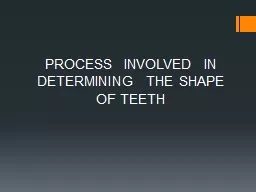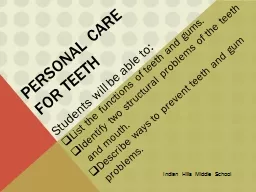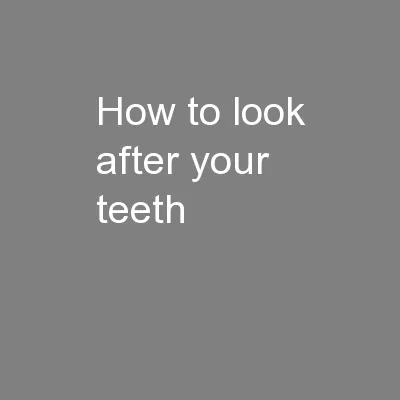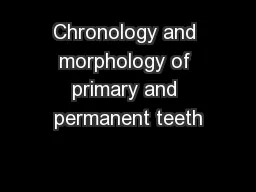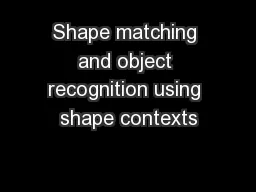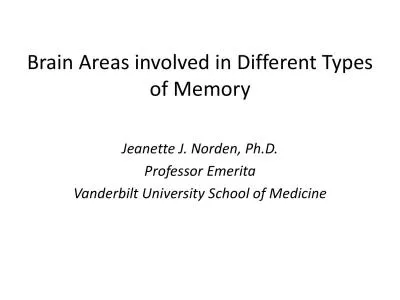PPT-PROCESS INVOLVED IN DETERMINING THE SHAPE OF TEETH
Author : ubiquad | Published Date : 2020-06-16
Tooth development or odontogenesis is the complex process by which teeth form from embryonic cells grow and erupt into the mouth Although many diverse species have
Presentation Embed Code
Download Presentation
Download Presentation The PPT/PDF document "PROCESS INVOLVED IN DETERMINING THE S..." is the property of its rightful owner. Permission is granted to download and print the materials on this website for personal, non-commercial use only, and to display it on your personal computer provided you do not modify the materials and that you retain all copyright notices contained in the materials. By downloading content from our website, you accept the terms of this agreement.
PROCESS INVOLVED IN DETERMINING THE SHAPE OF TEETH: Transcript
Download Rules Of Document
"PROCESS INVOLVED IN DETERMINING THE SHAPE OF TEETH"The content belongs to its owner. You may download and print it for personal use, without modification, and keep all copyright notices. By downloading, you agree to these terms.
Related Documents

